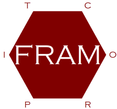the FUNCTIONAL RESONANCE
ANALYSIS METHOD
Strengths and weaknesses of the FRAM
Strengths of the FRAM
An important strength of the FRAM is that it provides a way to develop an overall understanding of how a socio-technical system works – or should work. The FRAM does not decompose a system into components and component characteristics, that are considered one-by-one. It therefore avoids the trap of finding a solution to each ‘cause’ or factor on its own, but rather emphasis a more comprehensive view.
The FRAM helps the analysis team to ask questions before it looks for answers, rather than to start by looking for answers. This is because the FRAM does not include a model of any system. Neither does it include assumptions about specific or typical cause-effect relations.
The FRAM can be used to model any kind of performance or activity, including itself (developing a FRAM model).
The FRAM requires imagination. The purpose of the method is to guide or to control an analysis, not to automate it. Since the FRAM is a method-sine-model rather than a model-cum-method, it guides the analysts and provides them with clues where to look, but not with answers.
There may be other strengths than the ones mentioned here. If you know of some and would like to share them with me, please drop me a line.
Weaknesses of the FRAM
One apparent weakness is that it may take a long time to do a FRAM analysis, and that it also may be difficult. This weakness is, however, apparent. It is simply due to the fact that the FRAM is a new method. Any method that is tried for the first time will require much effort and be difficult to understand. The apparent difficulty may appear larger if the team is used to a different kind of method, particularly if it is a simple cook book method, such as RCA.
The FRAM is a qualitative method, at least at the moment*. It does not in its current version support quantification, although it is by no means ruled out. The quantification would, however, have to be of a different nature, since the FRAM focuses on the likelihood of function variability rather than the probability of malfunctioning or failure.
The FRAM requires imagination. The purpose of the method is to guide or to control an analysis, not to automate it. Since the FRAM is a method-sine-model rather than a model-cum-method, it guides the analysts and provides them with clues where to look, but not with answers.
There may be other weaknesses than the ones mentioned here. If you know of some and would like to share them with me, please drop me a line.
* There are ways to include quantification in FRAM models and many research projects have used different types of quantification, however, currently there is not a single form of quantification that is a standard part of the FRAM method.
